13 June 2019
In Milan the great exhibition devoted to George de Chirico
Palazzo Reale, from 25 September 2019 to 19 January 2020
Opening on 25 September is the great exhibition devoted to George de Chirico (Volos, 1888 - Rome, 1978), which through some 100 masterpieces reconstructs the unrepeatable career of the Pictor Optimus. The rooms in Palazzo Reale in Milan, almost 50 years since the solo exhibition of 1970, again host de Chirico's work in an extraordinary retrospective curated by Luca Massimo Barbero, promoted and produced by the City of Milan-Culture, Palazzo Reale, Marsilio and Electa, in collaboration with the Giorgio and Isa de Chirico Foundation.
"De Chirico, a careful painter, borrows from dreams the accuracy of inaccuracy, the use of truth to promote the false".
(J. Cocteau, Le mystère laïc, 1928)
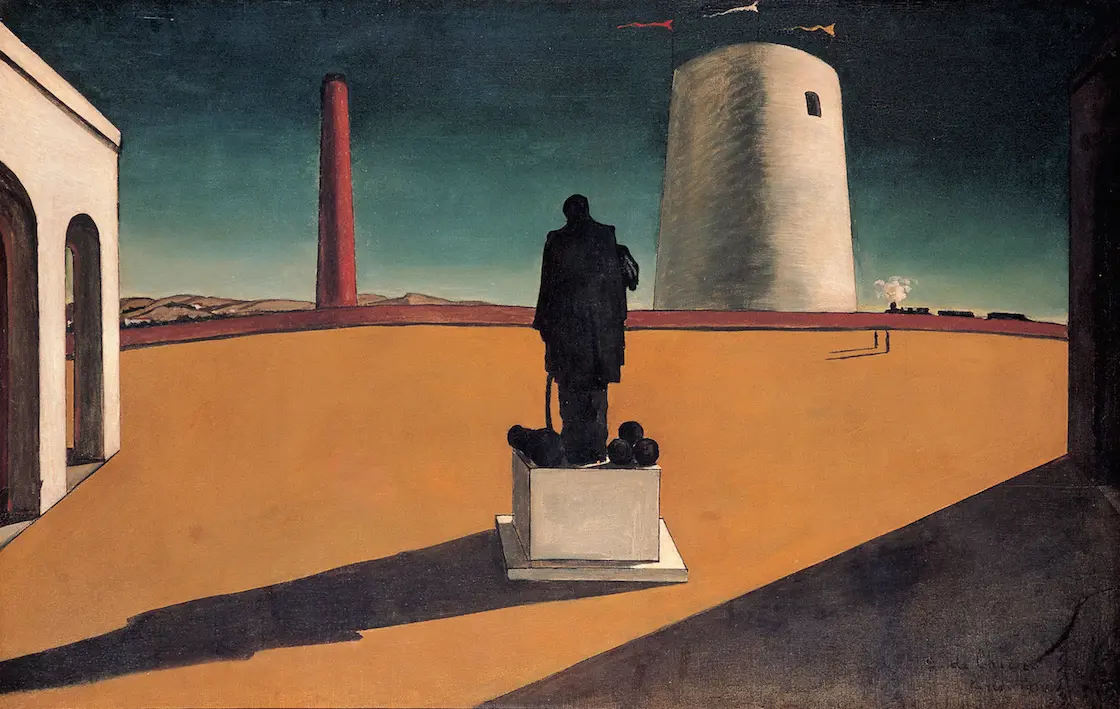
Giorgio de Chirico. The Enigma of a Day, 1914. Oil on canvas, 83 x 130 cm. Museu de Arte Contemporânea da Universidade de São Paulo, Brazil © G. de Chirico by SIAE 2019.
"We live in a phantasmic world and gradually gain acquaintance with it".
(G. de Chirico, 1918)
An exhibition layout made up of original comparisons and unrepeatable juxtapositions that reveal the phantasmic world of one of the 20th century’s most complex artistic figures. The exhibition offers the key to a hermetic art with its roots in the Greece of de Chirico’s childhood, that matured in the Paris of the avant-gardes, gave rise to the Metaphysical art that bewitched the Surrealists, captivated Andy Warhol and finally spread confusion with its irreverent and ironic reinterpretations of the Baroque.
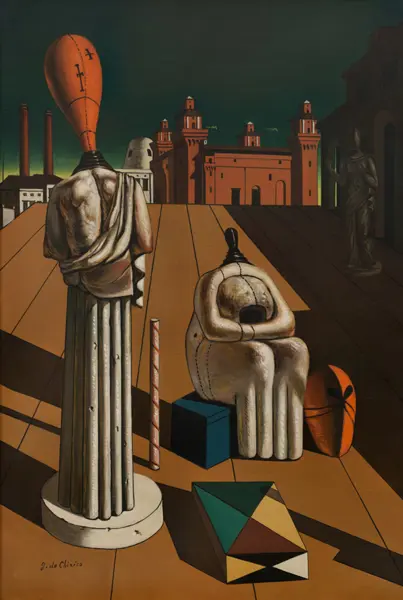
Giorgio de Chirico.
The Disquieting Muses, 1950 c.
Oil on canvas, 97 x 66 cm.
Macerata, Fondazione Carima - Museo Palazzo Ricci
© G. de Chirico by SIAE 2019
The substantial body of works on display comes from major international museums including the Tate Modern in London, the Metropolitan Museum in New York, the Centre Pompidou and the Musée d'Art Moderne de la Ville de Paris, the Galleria Nazionale di Arte Moderna e Contemporanea (GNAM) in Rome, the Peggy Guggenheim Collection in Venice, The Menil Collection in Huston and the MAC USP in São Paulo, Brazil.
Numerous Milanese institutionsare also taking part: the Museo del Novecento, the Casa Museo Boschi di Stefano, the Pinacoteca di Brera and Villa Necchi Campiglio.
Subdivided into eight rooms, the exhibition is organized by themes devised in keeping with unprecedented juxtapositions and original comparisons to create a chain of visual reactions that, as de Chirico wrote in 1918, pursue
“the demon in all things [...] the eye in all things [because] / We are explorers ready to set out again”.
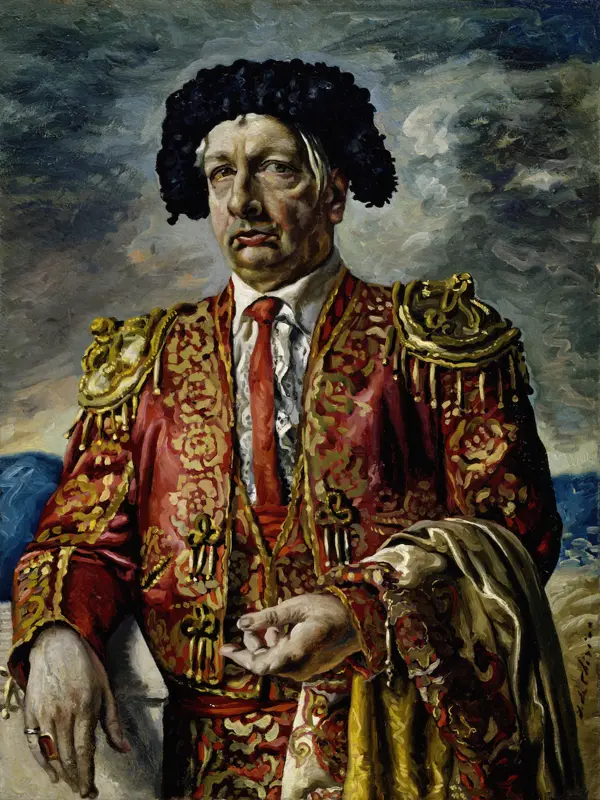
Giorgio de Chirico. Self-Portrait in Torero Costume, 1941-42. Oil on canvas, 80 x 60 cm. Firenze, Museo Casa Siviero. © G. de Chirico by SIAE 2019
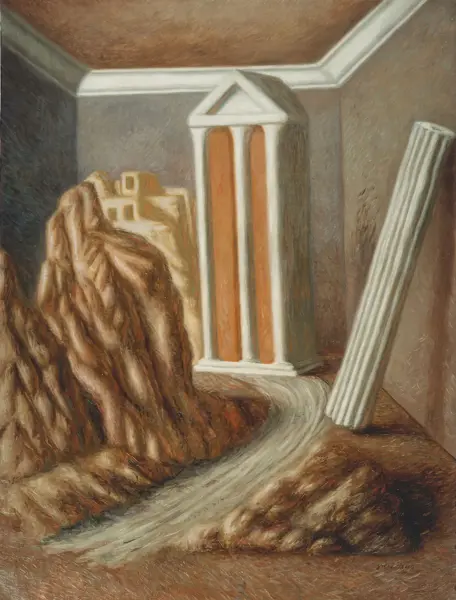
Giorgio de Chirico. Greek Temple , 1928. Oil on canvas, 116,9 x 89,5 cm. Private collection. © G. de Chirico by SIAE 2019.

Giorgio de Chirico. Genealogic du rêve , c. 1928. Oil on canvas, 72 x 53,5 cm. Private collection. Courtesy Galleria Tega, photo Daniele De Lonti.
© G. de Chirico by SIAE 2019.
Biography of Giorgio de Chirico
Giorgio de Chirico (Volos, 1888 - Rome, 1978) grew up in Greece, spent his formative years in the Munich of the Secession and matured in avant-garde Paris. Here he developed the theme of melancholy and the first paintings of the piazzas of Italy: visually electrifying, his works anticipated the avant-gardes and Surrealism. Returning to Italy on the outbreak of the war, in 1915 he settled with his brother, Alberto Savinio, in Ferrara, where Filippo de Pisis and Carlo Carrà were also living, leading to the development of the complex phase of Ferrarese interiors and the Disquieting Muses: paintings with an originally figurative character but in which each subject becomes a vision with dreamlike and mysterious overtones.
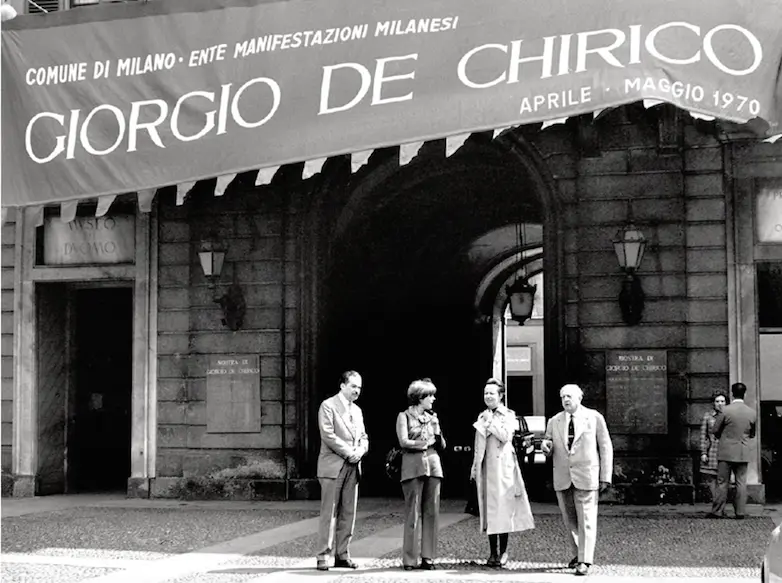
Giorgio de Chirico, Milan, 1970.
In 1918 he moved between Rome, Florence and Milan while maintaining his international contacts and, since 1924, again settled in Paris. In these years his provocative and radical imagination made him one of the protagonists of international art. His fruitful New York experience (1935-37) was notable for a solo show at the Pierre Matisse Gallery (1935), with 8 metaphysical masterpieces chosen by Alfred Barr for the exhibition Fantastic Art, Dada, Surrealism (MoMA, 1936-37, New York), and his decorative work for the Decorators Pictures Gallery – together with Picasso and Matisse – as well as the cover of Vogue in 1938.
In the same year he returned to Italy, and after a further stay in Paris, in 1944 the artist moved permanently to Rome, in his magnificent apartment in Piazza di Spagna. Renewing his metaphysical inventions, de Chirico developed a new and sumptuous quality of painting that invested every subject and projected into the present the technical and inventive richness of painting that he provocatively termed that of the “Old Masters”.
With a capacity that drew on Baroque impetuosity and a totally fantastic imagery made up of riders, landscapes and exuberant still lifes (he used the term “vite silenti” in preference to the usual Italian “nature morte”), de Chirico's painting entered into full contrast with contemporary art in the post-war period, confirming him again once, against all paradoxes, one of the masters of the mid-twentieth century. Convinced that the road taken was the only plausible one, in 1948 he engaged in polemics directed against the Venice Biennale, which he accused of championing a modernist current. He organized a series of “anti-Biennali” in the spaces of the Bucintoro, not far from Piazza San Marco. De Chirico, idolized and criticized, without slowing the flow of his painting, invented enchanted landscapes, irreverent self-portraits, with some in costume that anticipated today's themes of performance, to the point of claiming the right to reinvent the world of his Metaphysical paintings from early in the century. New fantastic inventions such as the sun on the easel, shadowy riders and weary troubadours were fatefully combined in the last years of his always vitalistic career with the Metaphysical rooms, the disquieting mannequins and the unique vision of this traveler in time and images. Giorgio de Chirico died in Rome in November 1978.
Information
Milan, Palazzo Reale. From 25 September 2019 to 19 January 2020. Opening hours: Monday 2:30 p.m. – 7:30 p.m. Tuesday, Wednesday, Friday and Sunday 9:30 a.m. – 7:30 p.m. Thursday and Saturday 9:30 a.m. – 10:30 p.m. The ticket office closes one hour before the closing times. Info: www.palazzorealemilano.it - www.dechiricomilano.it
How to get to Milan by plane
Edited by Nicolò Villa
Source and photos: Ufficio stampa Mostra/Comune di Milano
Photo works of art with reserved rights: © G. de Chirico by SIAE 2019
Visual of Milan: © Sisterscom.com, Shutterstock
All rights reserved. Copyright © Sisterscom.com
Find a flight
Where to sleep in Milan
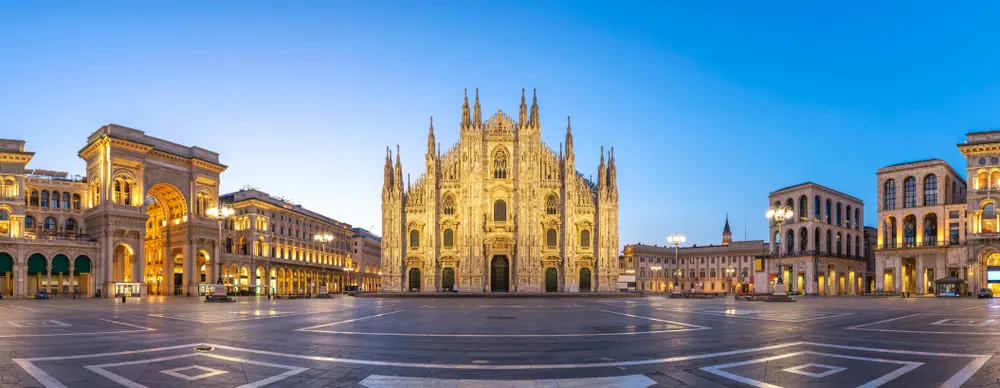
Milan, © Sisterscom.com, Shutterstock
Milan is a welcoming city and offers different possibilities for accommodation.
To find the ideal hotel and the best offers you can do a search for the stars but also for districts or landmarks.
Districts
Hotels in the districts
Landmarks
Hotel in tourist areas
Landmarks
Hotel in tourist areas
Airports
Hotels near the airports
You might be interested in
Destinations

Events
Italian cuisine is an Intangible Heritage of Humanity
UNESCO recognizes Italian culinary excellence worldwide, strengthening the Italian cultural identity and increasing the tourist attractiveness of the country for those who travel to discover authentic flavors
Destinations

Events
Milan will host the CAPA World Aviation Summit 2026
Top managers and international aviation players will meet in the Lombard capital to discuss sustainability, innovation and future strategies of the sector
Destinations

Events
World Tourism Day
It is celebrated on September 27 in Melaka (Malaysia) and this year's theme is "Tourism and Sustainable Transformation". It will be followed by the WTTC Global Summit in Rome from 28 to 30 September 2025


